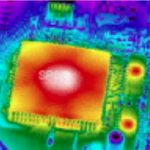A recent comment by a DACattendee mentioned that the IoT acronym was so over-used as to make him get upset at EDA vendors that all purport to be enabling the growing IoT revolution. One of the most common requirements that I hear about IoT electronics is that the power needs to be well understood and controlled during the design exploration… Read More
Tag: docea power
Simulation and Analysis of Power and Thermal Management Policies
Earlier this month I blogged about Power Management Policies for Android Devices, so this blog is part two in the series and delves into the details of using ESL-level tools for simulation and analysis. The motivation behind all of this is to optimize a power management system during the early design phase, instead of waiting until… Read More
Power and Thermal Analysis of Data Center and Server ICs
The server market is a diverse, yet standardized market. The ICs and components designed and manufactured in final assemblies must meet form factor requirements for rack mount and blades. The form factor enclosures and the component placement dictate the thermal-mechanical properties and hence the thermal cooling limits … Read More
Power Modeling and Simulation of System Memory Subsystem
One great benefit of designing at the ESL level is the promise of power savings on the order of 40% to 70% compared to using an RTL approach. Since a typical SoC can contain a hierarchy of memory, this kind of power savings could be a critical factor in meeting PPA goals. To find out how an SoC designer could use such an ESL approach to power… Read More
ESL Tool Update from #51DAC
As promised in my May 27th blog, I visited an ESL company at DAC three weeks ago that introduced two new tools:
- Thermal Profiler
- Power Intelligence
Different Approaches to System Level Power Modeling and Analysis for Early Design Phases
At DATEthis year in Dresden, Bernhard Fischer from Siemens CT(Corporate Technology) has presented an interesting summary of the various techniques used for power modeling and analysis at the architectural level. He went through the pros and cons of using spreadsheets, timed virtual platforms annotated with power numbers … Read More
Power and Thermal Simulation in ESL Verification Flows
At the recent DVcon there was a keen focus on design verification and validation. Much of the attention is on Logic/circuit design verification, UVM, and IP verification. At the system level functional verification has improved to comprehend complex hardware and software interaction using Virtual Platforms/SystemC and Transaction… Read More
Key Ingredients for ESL Power Modeling, Simulation, Analysis and Optimzations
There’s a French EDA company named DOCEA Powerthat is uniquely focused on power analysis at the ESL level and I had a chance to interview Ridha Hamza to get new insight on ESL design challenges and their approach. Ridha started out doing SRAM design at STMicroelectornics in the 1990’s, moved into the emerging field … Read More
Power and Thermal Modeling Approach for Embedded and Automotive using ESL Tools
Did you know that an S-class Mercedes Benz can use 100 microprocessor-based electronic control units (ECUs) networking throughout the vehicle that run 20-100 million lines of code (Source: IEEE)?
2014 Mercedes-Benz CLA
Here’s a quick list of all the places that you will find software controlling hardware in an automobile:… Read More
Early Thermal and Power Simulation Using Virtual Prototyping for Pedestrian Detection Applications
In the 1970’s we designed ICs first and when silicon came back then we measured the power and junction temperature. At that time there were no EDA simulation tools or models for full-chip power and temperature analysis. Fast forward to 2013 and we find that temperature and power are still demanding requirements for MPSoC … Read More


